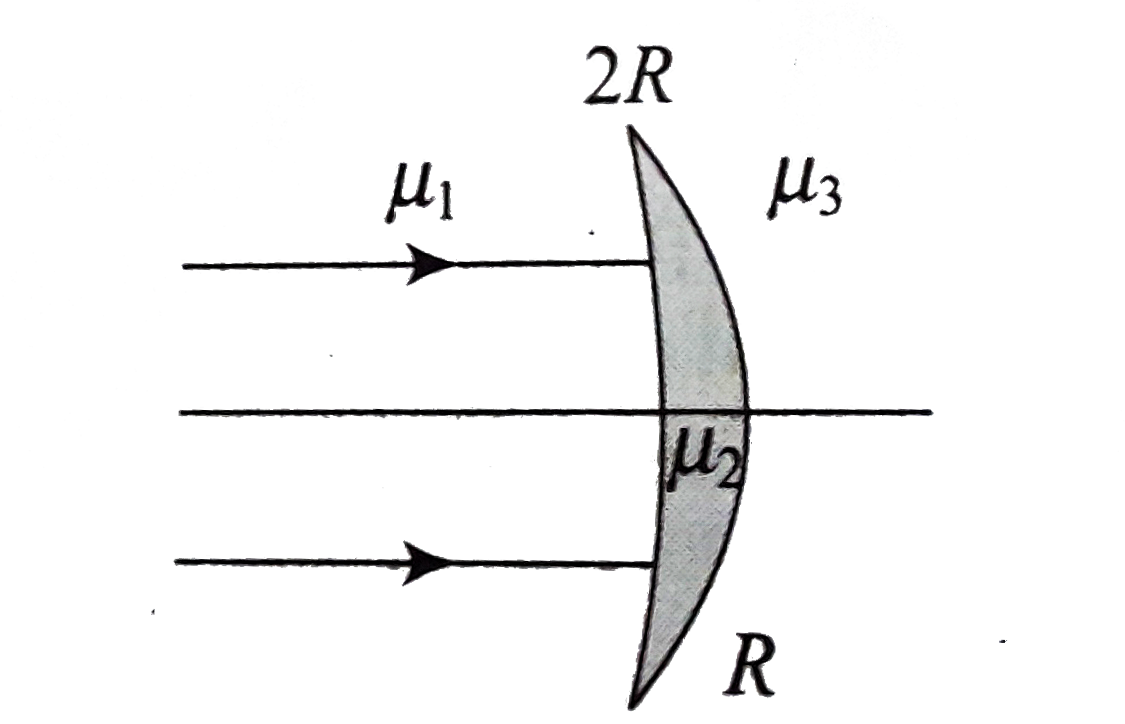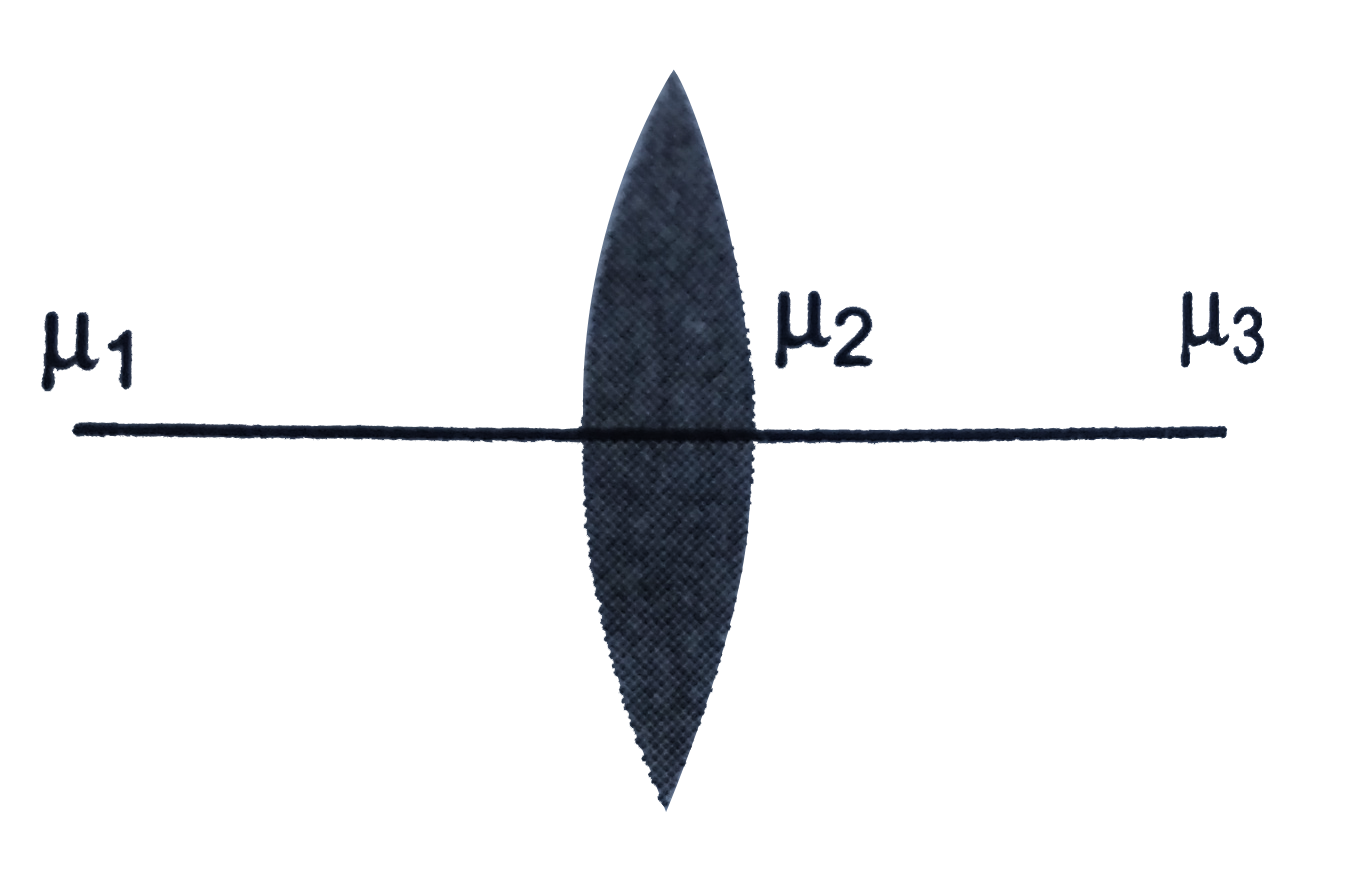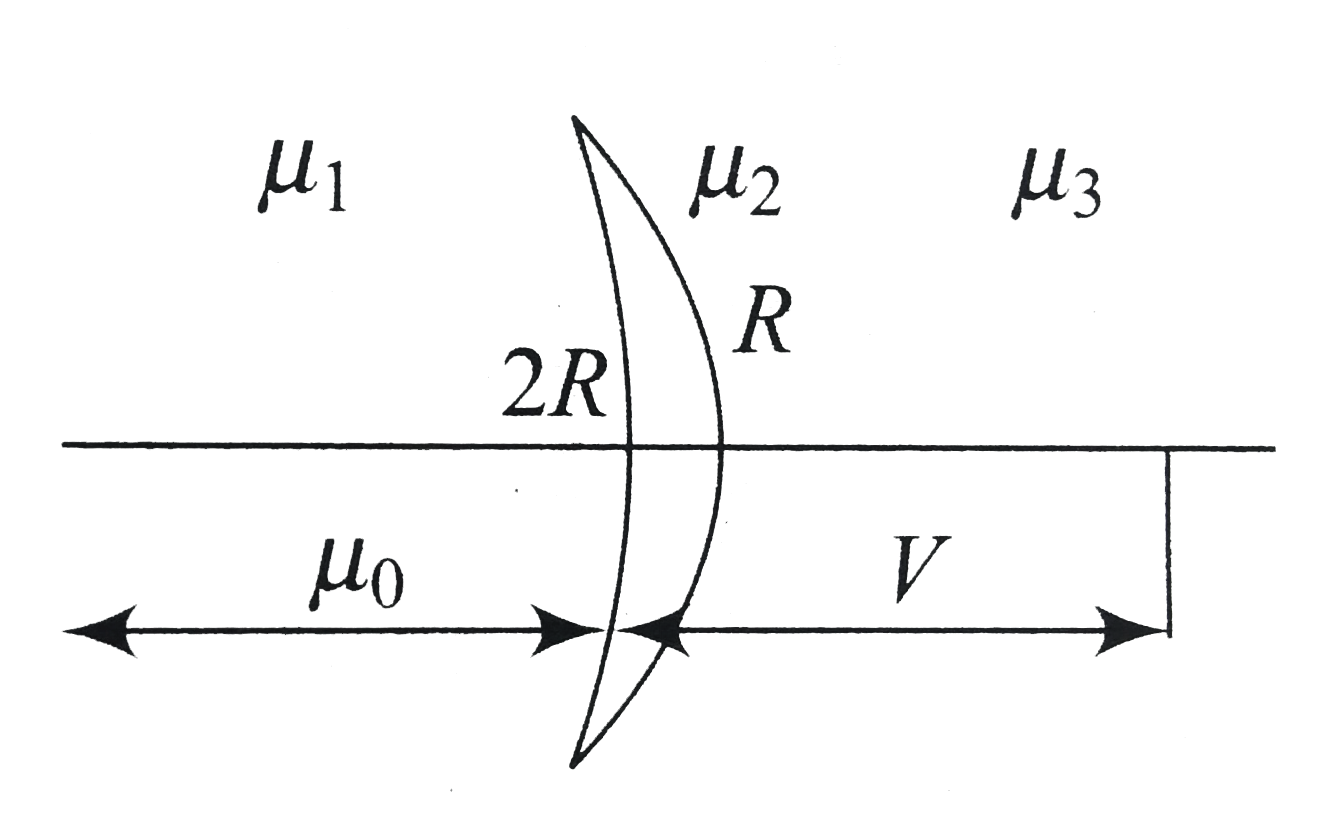Figure, shows a concavo-convex lens . What is the condition on the refractive indiecs so the at the lens is diverging?

None of these
The correct Answer is:b.
Topper's Solved these Questions
- GEOMETRICAL OPTICSBook:CENGAGE PHYSICSChapter:GEOMETRICAL OPTICSExercise:Assertion-Reasoninig
Explore 2 Videos
- GEOMETRICAL OPTICSBook:CENGAGE PHYSICSChapter:GEOMETRICAL OPTICSExercise:Linked Comprehension
Explore 51 Videos
- GEOMETRICAL OPTICSBook:CENGAGE PHYSICSChapter:GEOMETRICAL OPTICSExercise:Subjective
Explore 26 Videos
- FRICTIONBook:CENGAGE PHYSICSChapter:FRICTIONExercise:QUESTION BANK
Explore 1 Video
- GRAVITATIONBook:CENGAGE PHYSICSChapter:GRAVITATIONExercise:Question Bank
Explore 39 Videos
Similar Questions
The diagram shows an equiconvex lens. What should be the condition on the refractive indices so that the lens becomes diverging?

View SolutionFocal length of concavo-convex lens
A concavo-convex lens has radii of its faces 20cm and 60cm. If the refractive index of the material of the lens is 1.5, find its focal length.
View Solution
Knowledge Check
The figure shows an equi-convex lens. What should be the condition of the refractive indices so that the lens becomes diverging?
 A2μ3>μ1−μ2B2μ2<μ1+μ3C2μ2>2μ1−μ3DNone of these
A2μ3>μ1−μ2B2μ2<μ1+μ3C2μ2>2μ1−μ3DNone of theseA plano-convex lens P and a concavo-convex lens Q are in contact as shown in figure. The refractive index o fthe material of the lens P and Q is 1.8and1.2 respectively. The radius of curvature of the concave surface of the lens Q is double the radius of curvature of the convex surface. The convex surface of Q is silvered.

An object is placed on the placed on the principal axis at a distance 10cm form the plane surface. The image is formed at a distance 40cm from the plane surfaces on the same side. The focal length of the system isA−8cmB8cmC−403cmD403cmA plano-convex lens P and a concavo-convex lens Q are in contact as shown in figure. The refractive index o fthe material of the lens P and Q is 1.8and1.2 respectively. The radius of curvature of the concave surface of the lens Q is double the radius of curvature of the convex surface. The convex surface of Q is silvered.

The radius of curvature of common surface isA48cmB24cmC12cmD8cm
A convex lens is a diverging lens.
View SolutionA lens behaves as converging lens in air and a diverging lens in water (n=43) the condition on the value of refractive index n of the material of the lens ?
View SolutionWhat is the other name of a diverging lens ?
View SolutionThe radius of curvature of the curved surface of a plano-convex lens is 20cm. If the refractive index of the material of the lens be 1.5, it will
View SolutionIf a convex lens is dipped in a liquid whose refractive index is equal to the refractive index of the lens, then lens acts like a
View Solution
